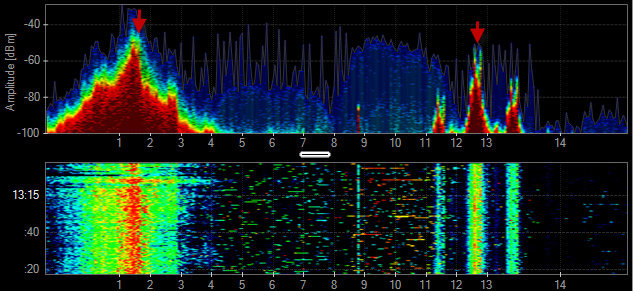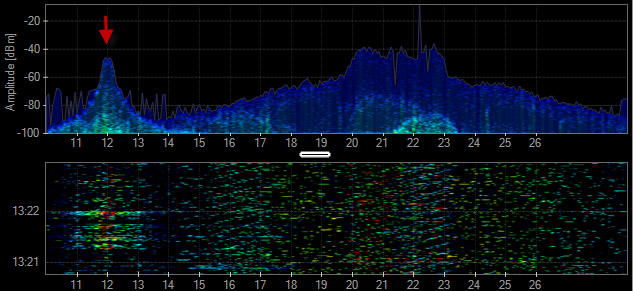


Spectrum analyzers have multiple methods for displaying signal amplitudes. The displayed amplitudes represent a combination of signals coming from data traffic on wireless networks and interfering signals coming from other sources. The display of a spectrum analyzer shows the amplitude (usually in dBm) of all signals over a particular range of frequencies, such as 2.4 GHz to 2.5 GHz, the “2.4 GHz band” used by 802.11b/g/n networks. Spectrum analyzer basicsĪ spectrum analyzer, available from vendors such as AirMagnet, Bantam Instruments, BVS, and MetaGeek, is a crucial tool for assessing RF interference because it visualizes RF signals. For example, when significant interference occurs, users of wireless IP phones may likely experience dropped calls, and browsing the web may be very slow. This disrupts the flow of data and degrades quality-of-service.

The problem with RF interference is that it causes wireless receivers to sporadically make mistakes when decoding packets, which results in retransmissions of data. Most RF interference occurs in the 2.4 GHz band whereas, the 5 GHz band is still relatively unaffected. Interference to wireless networks may come from a variety of sources, such as a microwave oven (MWO), cordless phone, or Bluetooth device. RF interference is an unwanted “signal” that occurs at the same time and frequency as a data signal. How to: Assess RF Interference with a Spectrum Analyzer



 0 kommentar(er)
0 kommentar(er)
